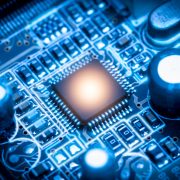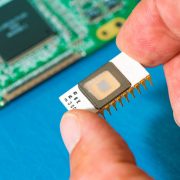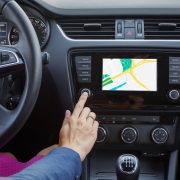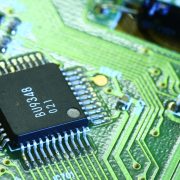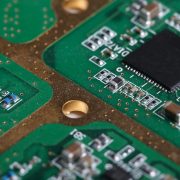Basic Information about a Sensor ASIC and Its Applications
ASIC (application specific integrated circuit) designs are built by manufacturers based on specific customer specifications. Many technologies can be used in order to produce ASICs, which was once thought to consist only of digital circuits.
These are almost entirely designed by logic synthesis programs, such as a physical layout, which is completed by automated place and route programs. However, there are no analog circuits included in this design.
There are many types of ASICs applications, which include sensor ASIC. Here are a few basic examples of ASIC applications:
- Automotive ASICs
- Digital pulse width modulator
- Electric odometers
- LCD display drivers
- VF display drivers
- Industrial ASICs
- Custom 8-bit microcontroller
- Digital trim potentiometer
- Micropower 555 timer
- Thermal controller
- Pulse counter and elapse time meters
- Medical ASICs
- Advanced hearing instruments
- Biometric sensors
- Programmable hearing aids
- Security ASICs
- Key lock tags
- Passive infrared motion detector
- RFID tag
- Spread spectrum controller
- Sensor ASICs
- Accelerometer piezo sensor
- Engine monitoring sensors
- Magneto-resistive sensor for control
What Are Sensor ASICs For?
Here are some of the custom ASIC applications that involve sensors.
- Sensor Interface and Bar Display Driver
This particular ASIC chipset will convert analog inputs into one of 10 programmable ranges. Then it displays the result on a 10-segment bar display. The input range is technically 0-2.55V and is set by either an external or internal reference voltage. The voltage level for every range contains a resolution of 8 bits and stored in an electrically erasable programmable read-only memory or EEPROM.
Basic features include:
-
- Absolute or Ratiometric sensors
- Data backed up in EEPROM
- Internal 5-volt regulator
- 7-decade season, 5-decade trip counters
- 7-digit LCD driver
- 20-bit binary Prescaler
- Record miles or hours
- Temperature range from -40 degrees Celsius to +85 degrees Celsius
- Engine Monitor and Warning Light Controller
This device will monitor up to 4 engine parameters, such as pressure, temperature, or voltage. If the parameter is out of range, it activates the corresponding warning light. At this point, the inputs on the sensor could be absolute or ratiometric. The inputs are also digitally filtered and might include hysteresis to avoid flickering. This is particularly intended for automotive instrument clusters.
Basic features include:
-
- 4-sensor channels
- Absolute or ratiometric
- External R and C
- Internal 10-volt regulator
- Internal oscillator for clock generation
- Optional hysteresis
- Programmable digital filters
- Temperature ranges from -40 degrees Celsius to +85 degrees Celsius
- Digital Pulse Width Modulator
This type of chipset modulates an input clock for a variable frequency and duty-cycle output signal. There are three 8-bit registers accessible via a 3-wire interface. They will be able to control configuration, frequency, and pulse width.
Basic features include:
-
- 8-Lead green PDIP package
- 8-MHz clock input frequency
- 3-wire serial bus input
- 2.5 to 6.0-volt supply range
- Direct replacement for Intersil CPD68HC68W1
- Programmable frequency and duty cycle output
- Temperature ranges from -40 degrees Celsius to +85 degrees Celsius
For more information on Sensor ASICs, contact Linear MicroSystems today for a proposal on your next project.
Linear MicroSystems, Inc. is proud to offer its services worldwide as well as the surrounding areas and cities around our Headquarters in Irvine, CA: Mission Viejo, Laguna Niguel, Huntington Beach, Santa Ana, Fountain Valley, Anaheim, Orange County, Fullerton, and Los Angeles.



